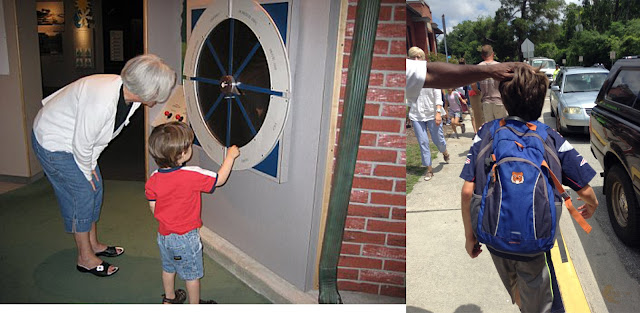 |
| some of the test prints from Reflections |
Last week, as I was looking at a printout of the collections record for one of the images in the show, I suddenly realised that women in the middle with the fabulous ruffled dress looks an awful lot like my neighbor.
We don't live on the kind of street where you spend a lot of time interacting. We don't have a HOA, we don't live on a cul-de-sac. We don't have block parties. Still, my neighbor, who has clearly lived in her house a long time, has been waving at my son since he was small. And she works on Election Day at our local polling station. So we'd chatted a few times about how much he has grown over the years.
I didn't just want to go over and shove a photo in her face and say "is this you" without some kind of confirmation. So I went back to the Museum's cataloging record. And, the woman in the ruffled dress had been identified earlier as Evelyn Coston Hinnant. I double checked the New Hanover County tax records (where you can look up and see who owns property in the county), and discovered that I seemed to be right - a Mrs. Hinnant lived across the street from us.
And so I took her a copy of the photograph. Mrs. Hinnant was delighted to see her younger self, and eagerly identified the two women standing next to her. The woman on the right was Barbara Graham, a classmate of Evelyn's when she was Evelyn Coston, Willistonian, Class of 1947. Mrs.Hinnant identified the other women as Virginia Pearsall.
Some days, it feels like its a very a good day to be a public historian. And connecting my neighbor to the past, and glimpsing the joy it seemed to bring her, made Monday June 15 a very good day.







